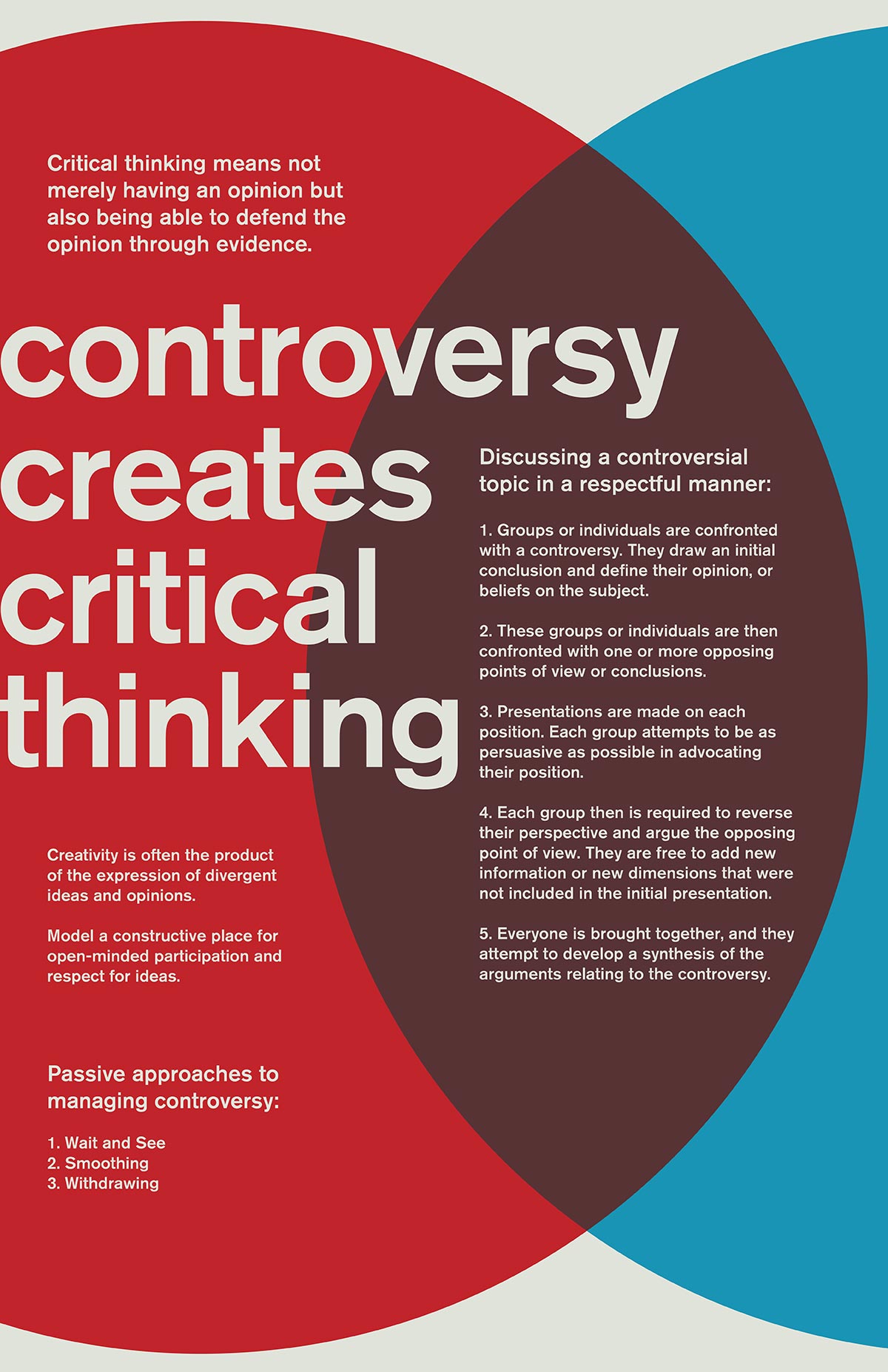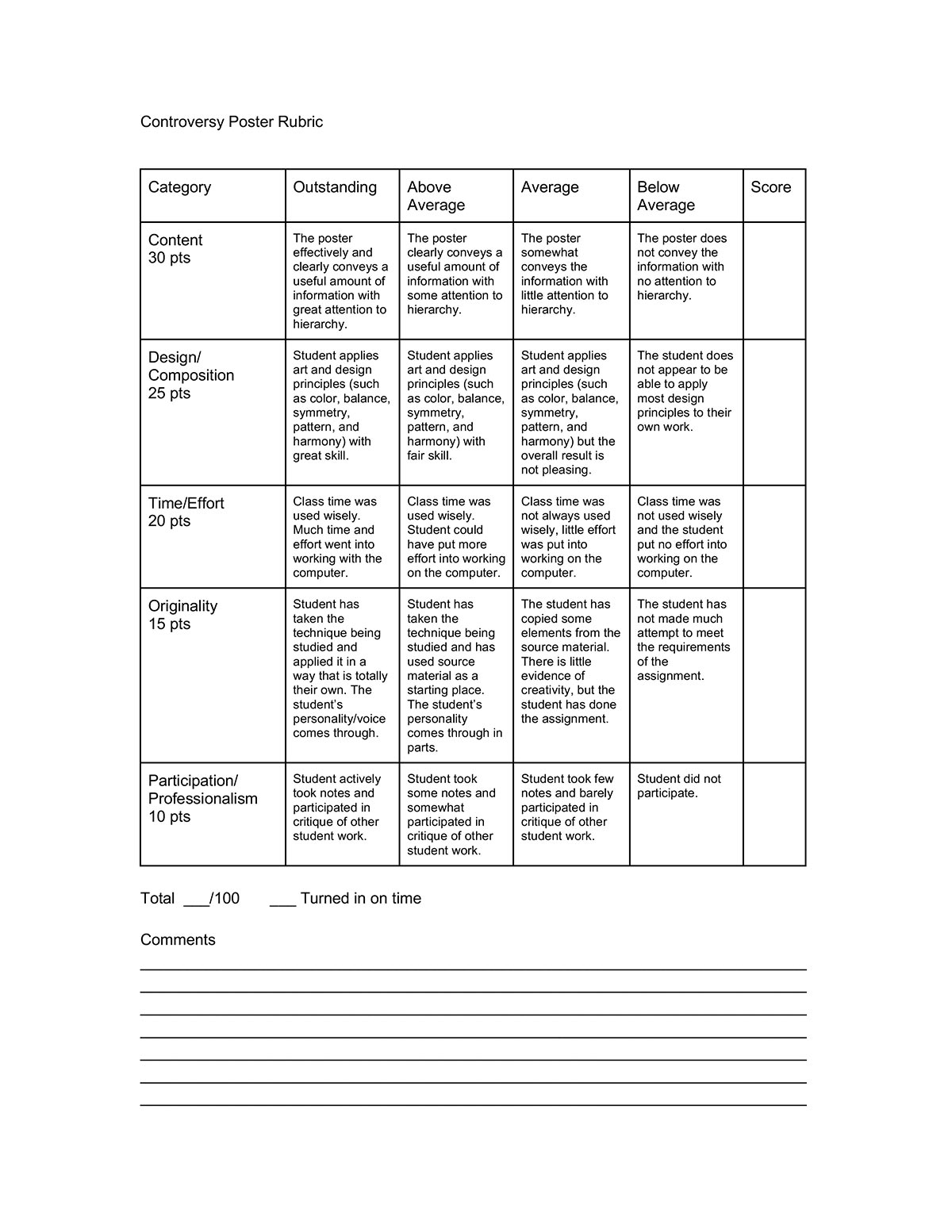Having students create a visual representation of information they read is an excellent way to help not only their retention of that information, but also a great way to have them practice visual spacial skills.

This poster focuses on the benefits and strategies of discussing controversial topics with students in a respectful and open-minded environment. These types of discussions get students out of the practice of taking a single approach to a problem and learning to think creatively. It serves as an example of how hierarchy of information leads to a visually pleasing and understandable poster.
Students can make a poster that aims to have this level of information, but should have it focused on their topic rather than making it about teaching controversy.
Here is a helpful rubric designed to accompany the creation of a poster on controversy by students on a controversial topic of their choice. The level of controversy doesn't have to be a big global issue, but should be something students actually find controversial. Brainstorming topics with the class before the assignment will quickly determine which topics are unanimously controversial.

Download the rubric: Controversy-Poster-Rubric.pdf